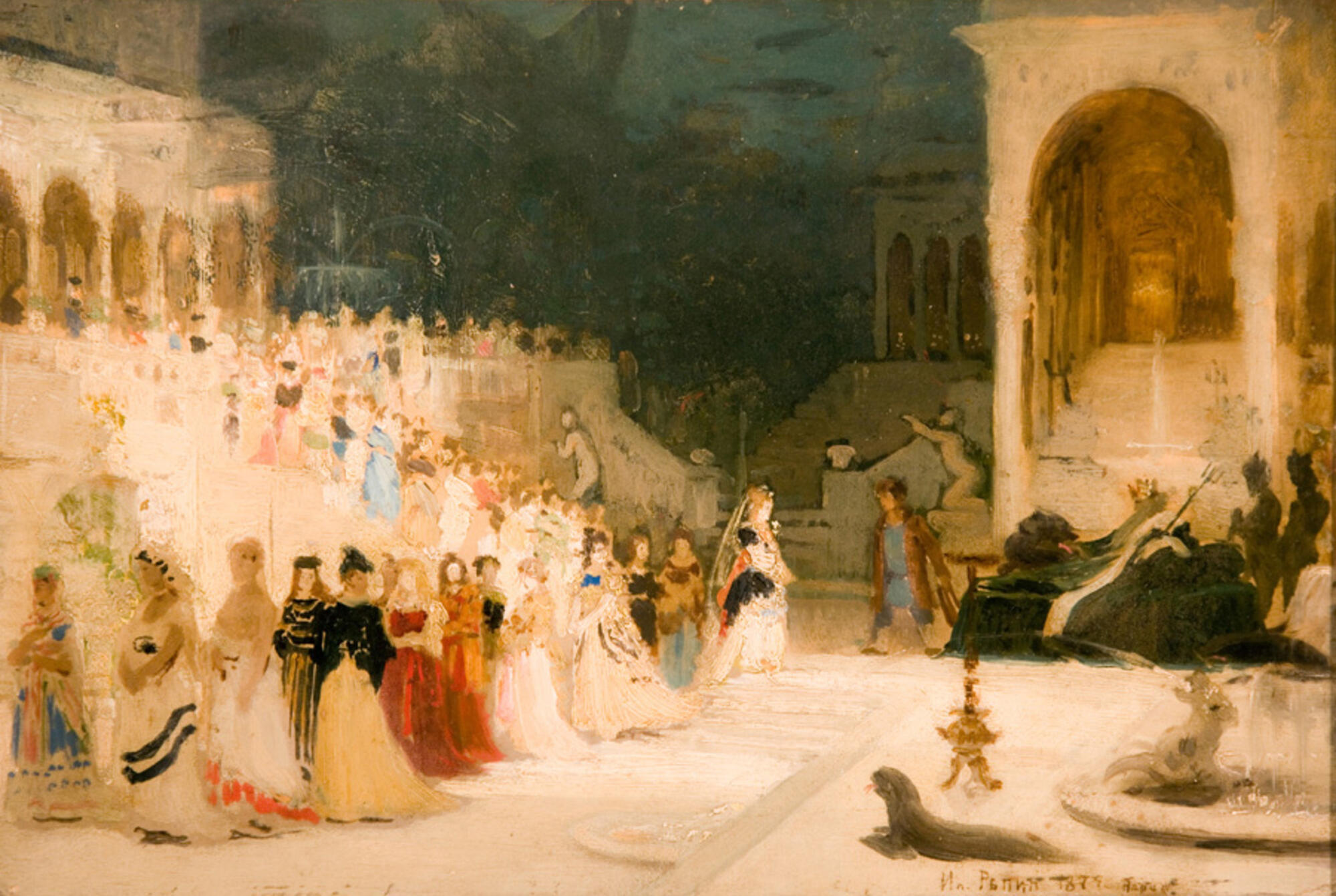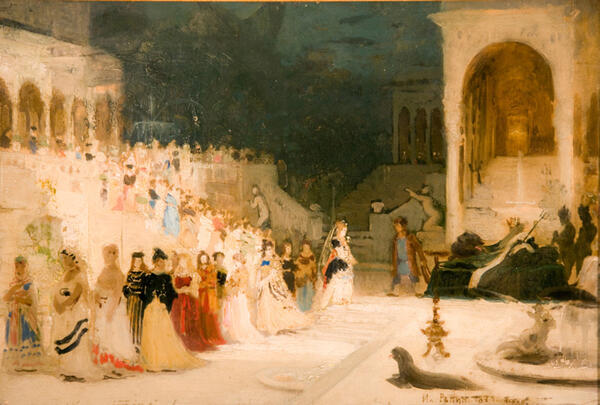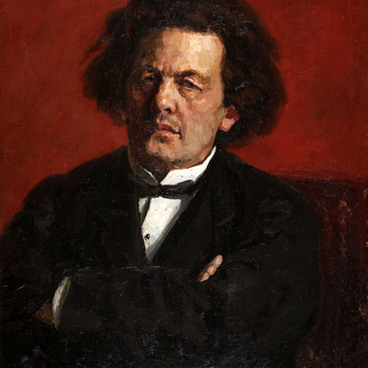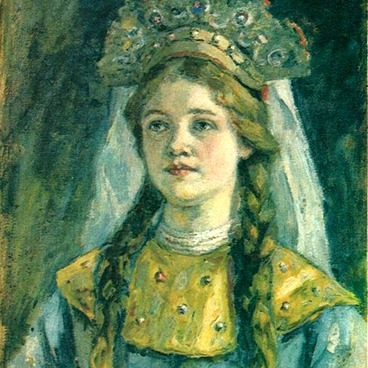The beginning of the 1870s in Russia was a period, characterized by an exceptional interest in Russian antiquity and folk traditions. An extraordinary attention to the origins and roots of the Russian people was embodied in the architectural construction and the revival of folk art. These first steps to the reconstruction of the image of Old Russia were later embodied in the fairy-tale folklore themes of Vasnetsov, Ryabushkin, Goryushkin-Sorokopudov and some other artists of the turn of the century. Ilya Repin (August 5, 1844, Chuguev, Russian Empire - September 29, 1930, Kuokkala, Finland) became the first artist who sincerely responded to the call for the revival of Russian antiquity. His appeal to traditional epic plots emphasized his extraordinary thematic range and the depth of his talent. Repin managed to depict it in a large painting. In spite of the criticism of the naturalism in the interpretation of some episodes, Repin’s “Sadko” became the first painting in Russian art dedicated to fairy-tale stories.
The sketch for the painting “Sadko in the Underwater Kingdom” in the collection of the Taganrog Art Museum, illustrates Repin’s longtime work on solving the composition. Analyzing the sketch, it seems the artist was initially attracted by the solemn motive of the procession.
The sketch for the painting “Sadko in the Underwater Kingdom” in the collection of the Taganrog Art Museum, illustrates Repin’s longtime work on solving the composition. Analyzing the sketch, it seems the artist was initially attracted by the solemn motive of the procession.




